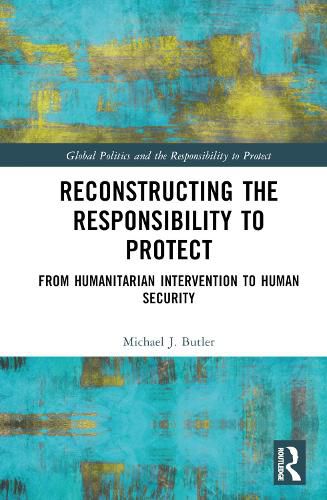Readings Newsletter
Become a Readings Member to make your shopping experience even easier.
Sign in or sign up for free!
You’re not far away from qualifying for FREE standard shipping within Australia
You’ve qualified for FREE standard shipping within Australia
The cart is loading…






This book interrogates the concept of the Responsibility to Protect (R2P) as a normative construct and how the construction and promotion of this norm may have contributed to a stagnation in humanitarian action.
This interrogation includes a particular focus on the impact of R2P on prevailing attitudes and discourses concerning humanitarian military intervention as well as the (under)provision of same. The study seeks to bridge the proverbial gap between theory and policy, specifically concerning our collective understanding of contemporary dynamics of humanitarian intervention and crisis. This objective is accomplished through the application and critical reformulation of the norm life cycle model and its three component stages (emergence, cascade, and internalization) relative to the presumed norm of R2P. The book advances the argument that R2P has only partially cascaded - stagnating rather than fully diffusing after reaching the ‘tipping point’, and in the process leaving the life cycle of the R2P norm in a state of dynamic equilibrium (e.g., a ‘steady state’). Consequently, the chief implication of the dynamic of stagnation within international society which the book seeks to advance and support is the non-attainment of norm internalization.
Through close examination of the genesis and evolution of R2P, the work contends that R2P actually poses a significant if not fundamental challenge to the animating logic of the norm life cycle model. Having reached the requisite tipping point through formal endorsement by the UN over a decade ago, R2P has failed to manifest itself in humanitarian intervention behavior. The key to understanding why resides in deficiencies of the norm life cycle model itself. By failing to provide a sufficient account of the dynamics of norm pre-emergence (whereby ideas are transformed into proto-norms) or to acknowledge the possibility norm stagnation (whereby a norm fails to diffuse and become internalized), the norm life-cycle model provides an underspecified mechanism for understanding how and why an idea may in fact cross the threshold of the ‘tipping point’-attaining the status of a norm in international society in the process-but fail to penetrate and influence policy discourses and processes. The study seeks to bridge the proverbial gap between theory and policy, specifically concerning our collective understanding of contemporary dynamics of humanitarian intervention and crisis.
This book will be of much interest to students of the Responsibility to Protect, human rights, conflict studies and international relations in general.
$9.00 standard shipping within Australia
FREE standard shipping within Australia for orders over $100.00
Express & International shipping calculated at checkout
This book interrogates the concept of the Responsibility to Protect (R2P) as a normative construct and how the construction and promotion of this norm may have contributed to a stagnation in humanitarian action.
This interrogation includes a particular focus on the impact of R2P on prevailing attitudes and discourses concerning humanitarian military intervention as well as the (under)provision of same. The study seeks to bridge the proverbial gap between theory and policy, specifically concerning our collective understanding of contemporary dynamics of humanitarian intervention and crisis. This objective is accomplished through the application and critical reformulation of the norm life cycle model and its three component stages (emergence, cascade, and internalization) relative to the presumed norm of R2P. The book advances the argument that R2P has only partially cascaded - stagnating rather than fully diffusing after reaching the ‘tipping point’, and in the process leaving the life cycle of the R2P norm in a state of dynamic equilibrium (e.g., a ‘steady state’). Consequently, the chief implication of the dynamic of stagnation within international society which the book seeks to advance and support is the non-attainment of norm internalization.
Through close examination of the genesis and evolution of R2P, the work contends that R2P actually poses a significant if not fundamental challenge to the animating logic of the norm life cycle model. Having reached the requisite tipping point through formal endorsement by the UN over a decade ago, R2P has failed to manifest itself in humanitarian intervention behavior. The key to understanding why resides in deficiencies of the norm life cycle model itself. By failing to provide a sufficient account of the dynamics of norm pre-emergence (whereby ideas are transformed into proto-norms) or to acknowledge the possibility norm stagnation (whereby a norm fails to diffuse and become internalized), the norm life-cycle model provides an underspecified mechanism for understanding how and why an idea may in fact cross the threshold of the ‘tipping point’-attaining the status of a norm in international society in the process-but fail to penetrate and influence policy discourses and processes. The study seeks to bridge the proverbial gap between theory and policy, specifically concerning our collective understanding of contemporary dynamics of humanitarian intervention and crisis.
This book will be of much interest to students of the Responsibility to Protect, human rights, conflict studies and international relations in general.